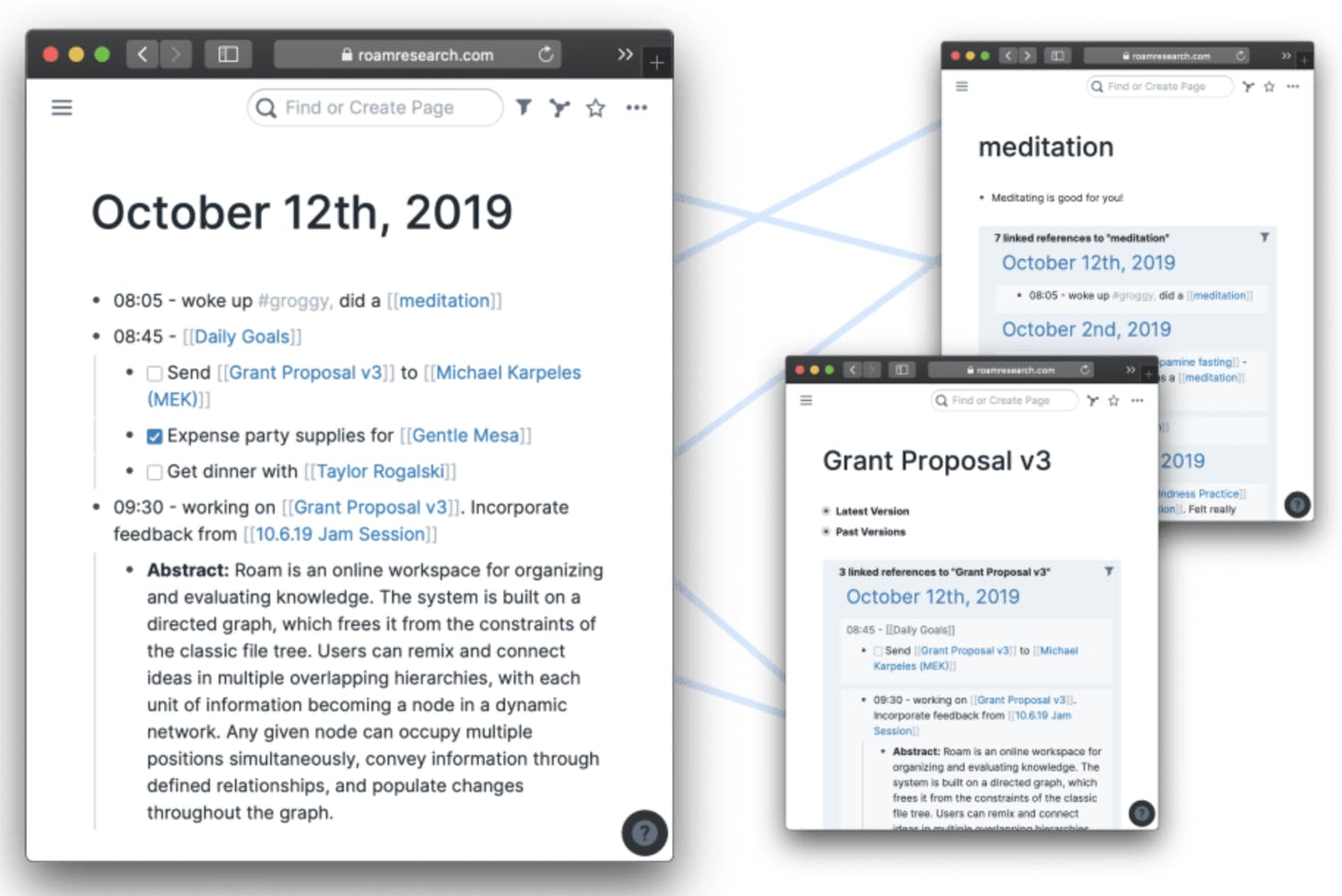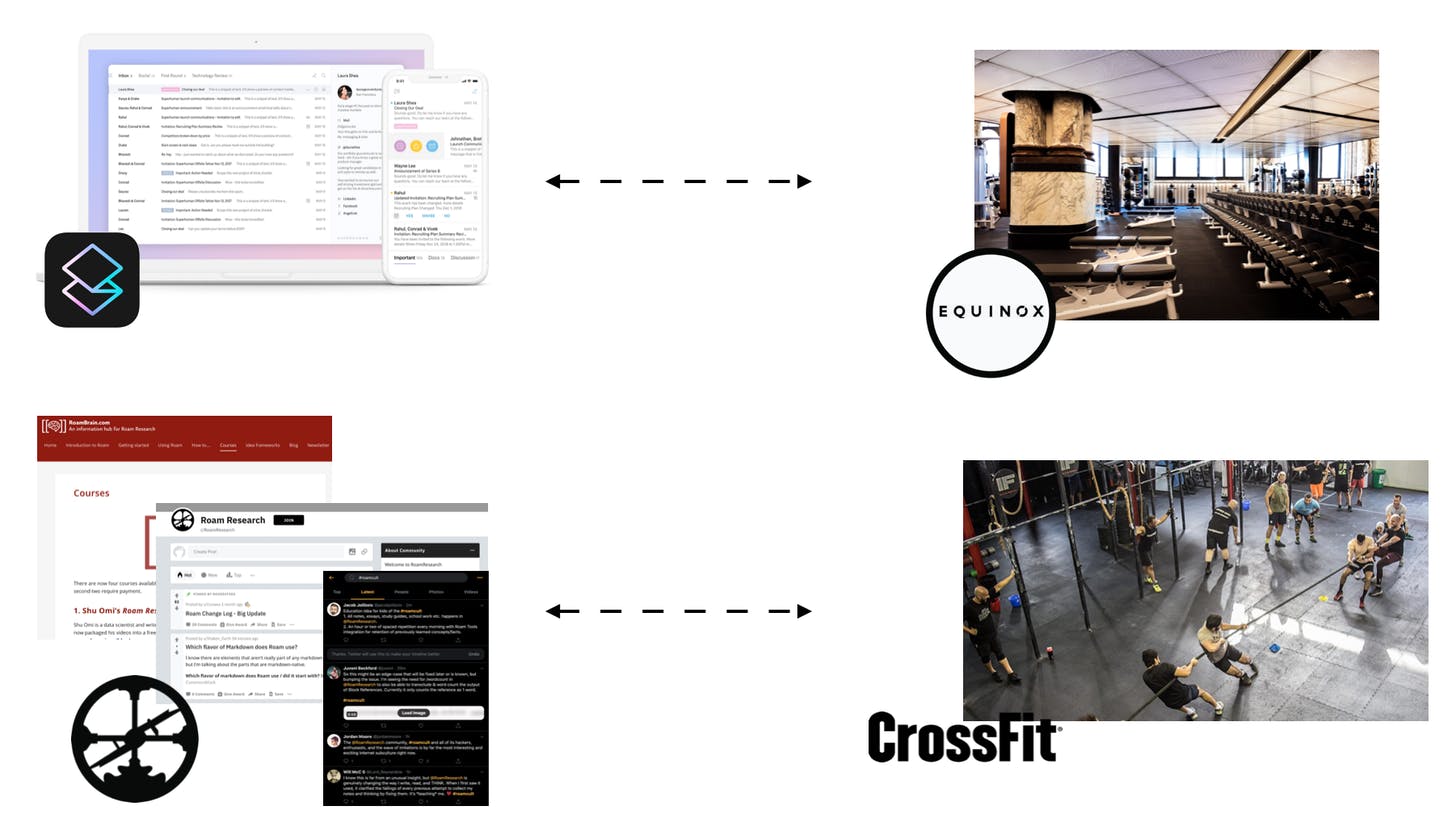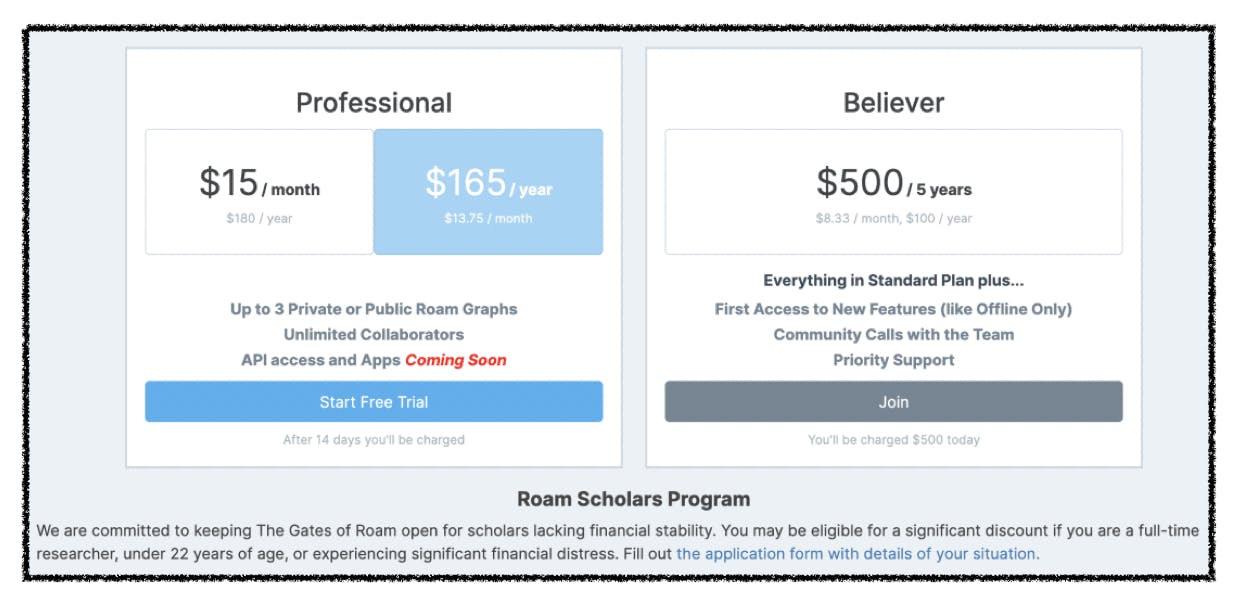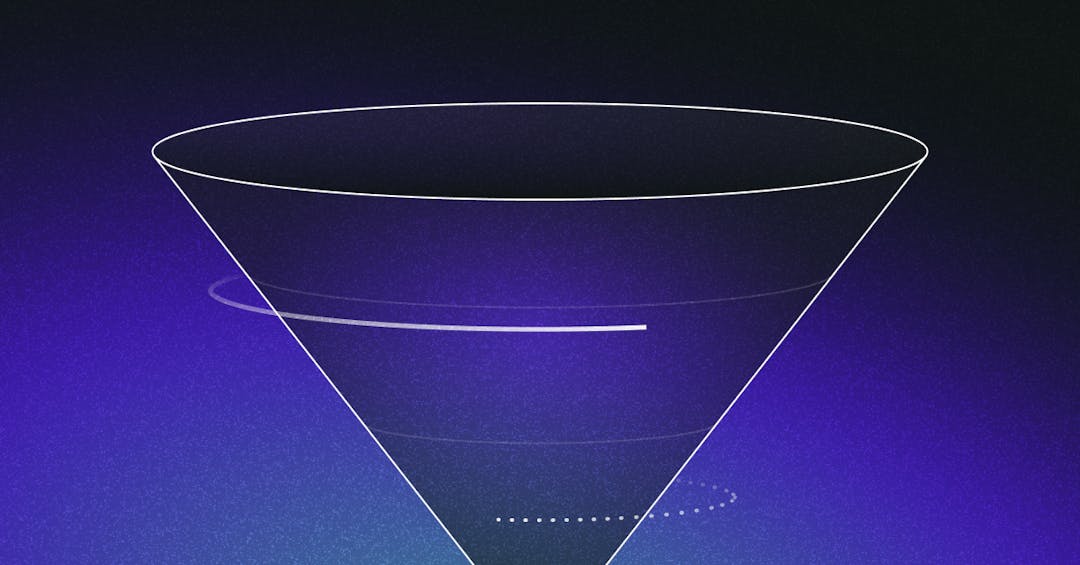I imagine most people reading this fall into one of four buckets…
- Bucket 1: Never heard of Roam Research
- Bucket 2: Vaguely familiar with Roam Research
- Bucket 3: Have tried Roam Research and didn’t get it
- Bucket 4: Have tried Roam Research and believe it unlocks higher consciousness
For the unfamiliar, Roam Research is a note-taking application built to replicate the way our brains connect thoughts.

It’s built on the idea of bi-directional linking, and users tend to either get it or they don’t, but the ones that do…really do.
Just look at these testimonials:

“As profound a mental prosthetic as hypertext…”
“Feels like I’m playing learning: the video game…”
“Enabled me to stop segmenting and limiting thoughts…”
High praise, right?!
If you think these statements are excessive, try searching #roamcult on Twitter. I promise you, this is just the tip of the iceberg.
The word culty gets thrown around a lot in tech, and before diving into Roam’s packaging, I want to go down a quick rabbit hole on why I believe Roam actually deserves the label.
What it means to be culty
On first look, it may seem like Roam has a lot in common with another software company that’s been given the culty label, Superhuman.
While Roam and Superhuman are both opinionated software, driven by keyboard shortcuts, and priced at a premium to competitors, there’s a big difference between the two, which I think can be described by looking at a parallel in fitness.
Superhuman took the traditional email experience and elevated it - optimizing for speed, improving the design, and adding advanced features like spell-check, undo, and AI-enabled triage. This reminds me of Equinox elevating the traditional gym experience with elite equipment, spa treatments, and of course: eucalyptus towels.
While Superhuman and Equinox both have devoted customers, neither has an organic community that’s oriented around an underlying mission. To be truly culty, a company has to exist in service of something deeper than luxury.
As you scroll through tweets tagged with #roamcult, you get the sense these users identify with Roam beyond just using the app, and consider #roamcult a defining trait of their digital lifestyle.
In this sense, Roam is like CrossFit. Both are built on an underlying philosophy. Roam is built on the power of networked thought, CrossFit on a functional approach to fitness.

While CrossFit membership can carry a similar monthly cost to Equinox, it is decisively not luxury. Most CrossFit boxes don’t even have mirrors! CrossFit members pay a high monthly rate because they believe in a specific approach to fitness.
With the release of their first packaging lineup, a similar dynamic now applies to Roam. To use Roam, you have to commit, and this sense of commitment permeates their entire packaging strategy.
The cult packaging playbook
So what does culty packaging look like?




